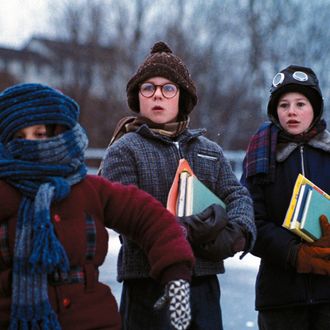
The “bystander effect” is one of the better-documented and more unfortunate aspects of human nature. As Psychology Today sums it up, the effect “occurs when the presence of others hinders an individual from intervening in an emergency situation.” The 1964 stabbing death of Kitty Genovese in New York City went a long way toward kicking off social psychologists’ interest in the subject: In the story’s initial reporting and subsequent retellings, numerous bystanders heard Genovese’s cries for help but failed to intervene. (This, as The New Yorker pointed out last year, isn’t quite how things actually went down, but the effect has been observed in many other contexts as well.)
Researchers have posited three main reasons why the bystander effect occurs: the diffusion of responsibility — that is, the lack of a sense that it is any one person’s job to step in, since there are others around who might do so; social referencing, or the natural human tendency to look around to see how others are acting and shape one’s own actions accordingly; and simple shyness at standing out from a passive crowd.
But as a team led by Maria Plötner of the Max Planck Institute for Evolutionary Anthropology writes in a new article in Psychological Science, we don’t know much about how and when the bystander effect emerges in children. There’s only been a little bit of past research into this, the authors write, and those studies that have been done haven’t been structured in a way that reveals all that much about what might be driving the bystander effect — or the lack of it — in children.
To better understand all this, Plötner and her colleagues got 60 5-year-olds together and set up a cute experiment that involved telling them they were going to color in a picture while an adult painted a cardboard wall. The experiment differed in a couple of important ways for different participants: Sometimes the kid was alone with the painting adult, and sometimes there were a couple of other kids painting with them who were actually confederates of the experimenter — they’d been told not to talk or to reveal anything about the role they were playing.
There were two versions of the bystander condition — in one of them, the adult set up the cardboard wall so it temporarily blocked the two confederate-kids in the corner, physically separating them from the rest of the room (the “bystander-unavailable” condition, as the researchers called it); in the other, the cardboard wall was leaned against the room’s wall, meaning no one was blocked off from anything (simply the “bystander” condition).
A bit after the coloring session started, the experimenter knocked over a cup, spilling colored water on her table, and made a series of carefully timed pleas (to make sure the experiment was similar during each run-through) to try to attract the kid’s attention and get him or her to help by bringing over some paper towels. Then, after the incident, the researchers interviewed the kids to determine whether they actually noticed what had happened, whether they understood the adult had needed help, and whether or not they personally felt a responsibility to help.
As theory would predict, the kids were most likely to help when they were alone — almost all of them did — but, more interesting, the same number of kids helped in the bystander-unavailable condition as well. It was only in the bystander condition where the percentage dropped — and precipitously so, to just over 50 percent of the kids bringing over paper towels.
This, combined with the post-experiment interviews, suggested to the researchers that it was diffusion of responsibility, not social referencing or shyness, that caused the kids to decline stepping in to help. In the bystander-unavailable condition, after all, the kids could all see each other, so there was no reason social referencing or shyness wouldn’t be a factor. The only difference was the other kids couldn’t help: The only person who could was the subject of the experiment him or herself. That version of the experiment broke down the diffusion of responsibility.
Obviously this study can’t tell us all that much about how adults, who have under their belts decades more worth of life experience and social conditioning than 5-year-olds do, fall victim to the bystander effect. And the effect is most notorious in emergency situations a lot more serious than some spilled water — situations that are probably tough to simulate ethically in experiments with little kids.
Still, this is a clever experiment with an important insight into how we first become susceptible to this human tendency, and it suggests, as the authors write, that “interventions to promote helpfulness in bystander-type situations should address the issue of diffusion of responsibility early in development.”




